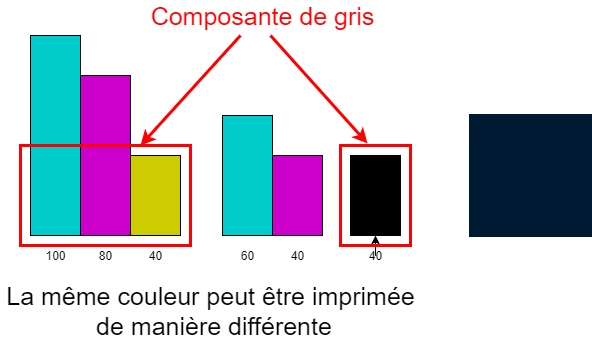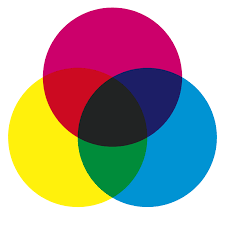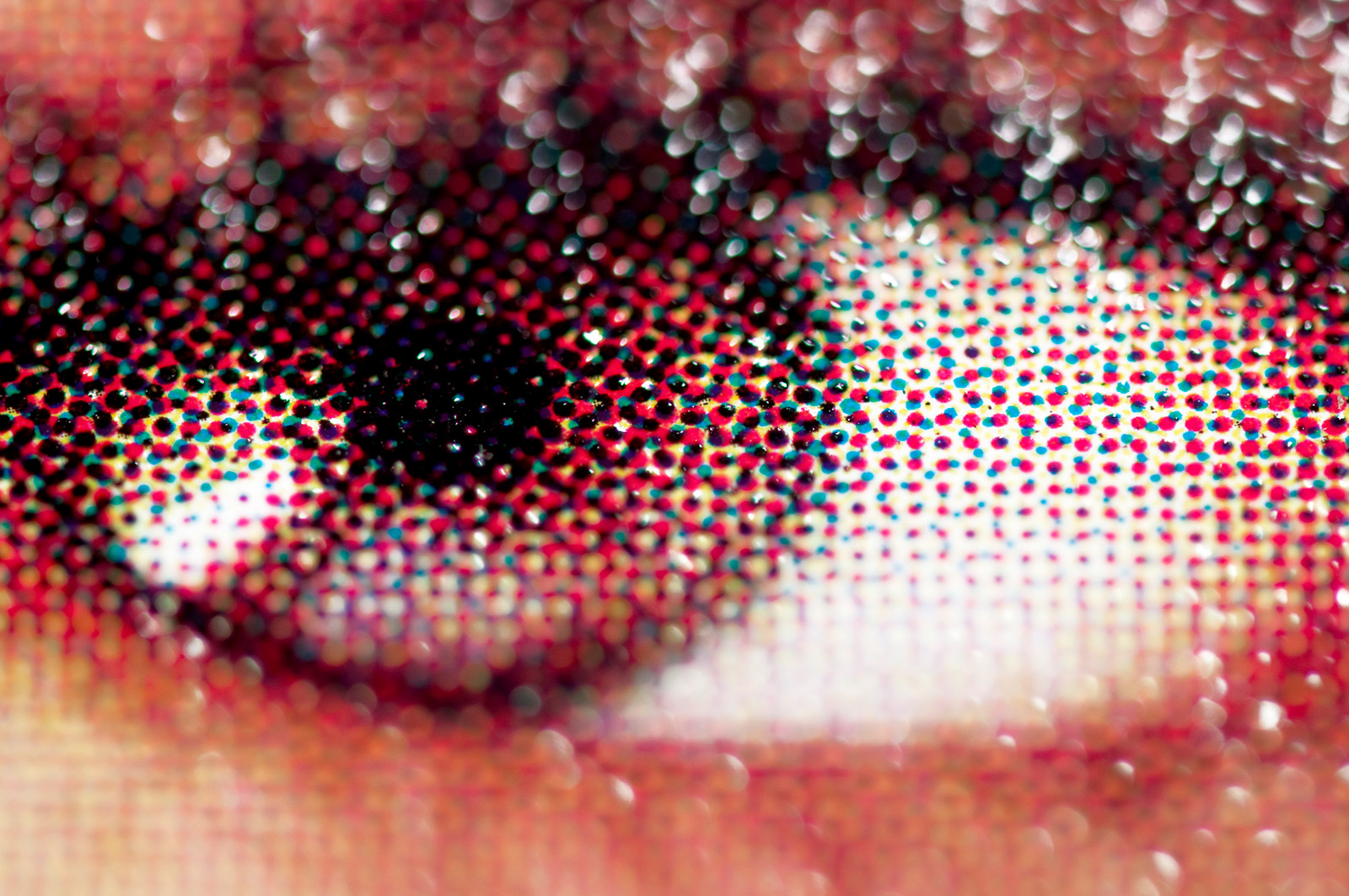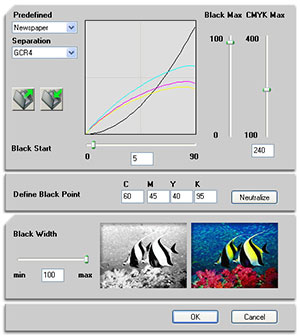Subtractive synthesis
In the subtractive synthesis everything is reversed with respect to the additive system.
Cyan, magenta and yellow become the primary colors
- Red is the complementary color of cyan
- Green is the complementary color of magenta
- Blue is the complementary color of yellow
The light source is the white of the paper.
Each deposit of dye on the paper will subtract a certain amount of light from the paper.
- The superposition of cyan ink and yellow ink on green.
- The superposition of magenta ink and yellow ink results in red.
- The superposition of cyan ink and magenta ink results in blue.
The darkest color in the system is the mixture of all primary inks.
By using just three dyes on a sheet of white paper, it is possible to reproduce almost all of the other colors.
Subtractive synthesis is very often associated with CMY primaries (Cyan, Magenta, Yellow).
The mixture of the three primaries will give the darkest color of the system which should ideally be close to black.
The absence of the three primaries obviously gives white (white of the support)
The subtractive synthesis concerns all the mixtures of colors exploiting the illumination of a support such as artistic painting, dyeing, printing inks or printers,
If in theory, the three primary colors CMY can reproduce all the intermediate colors going from white to black. In practice, the inks used in printing techniques (inkjet, offset, etc.) are not pure enough to produce theoretical black.
CMY or CMYK?
The maximum layering of CMY inks on the paper can only reproduce a dark brown, which is why black "N" ink has been added to these printing techniques, in order to achieve the darkest black. deep and neutral possible. Hence the CMYK color space. A CMYK file contains the 4 composite layers C, M, J, N (coded from 0 to 100%).
This system based on the CMY mixes reinforced by the color black is called the four-color process (CMYK). it is also a color space based on subtractive synthesis.
Black also has other advantages like:
- Add depth, contrast and detail
- Easier gray neutralization
- Texts printed in black only
- Reduce the amount of ink used
- So drying when printing faster
- So printing faster
- So more profit
CMY Gray
An important concept in the field of calibration is the control of gray neutrality.
A well calibrated device should be able to reproduce neutral grays.
In theory, to obtain a neutral gray in CMY, cyan, magenta and yellow must be dosed in a balanced way.
For example,
A dark gray will have a CMY value of C80%, M80%, J80%
A medium gray will have a value of C50%, M50%, J50%
A light gray will have a value of C20%, M20%, J20%
This is why the control of "gray" on a printer, makes it possible to detect a colorimetric drift of this one.
The GCR (Gray Component Replacement)
Black is taken as a full component of color.
By definition, any trichromatic color is partly composed of a substantially equal share of Cyan, Magenta and Yellow.
However, this substantially equal part is comparable to gray since the balance of cyan, magenta and yellow gives gray.
We can therefore theoretically replace this part of the color, called achromatic, by black.
In the separation, the black curve can therefore start very early and quickly gain strength.

During CMYK separation, the color is gradually replaced by black ink.
The darker the color, the greater the proportion of black ink.


